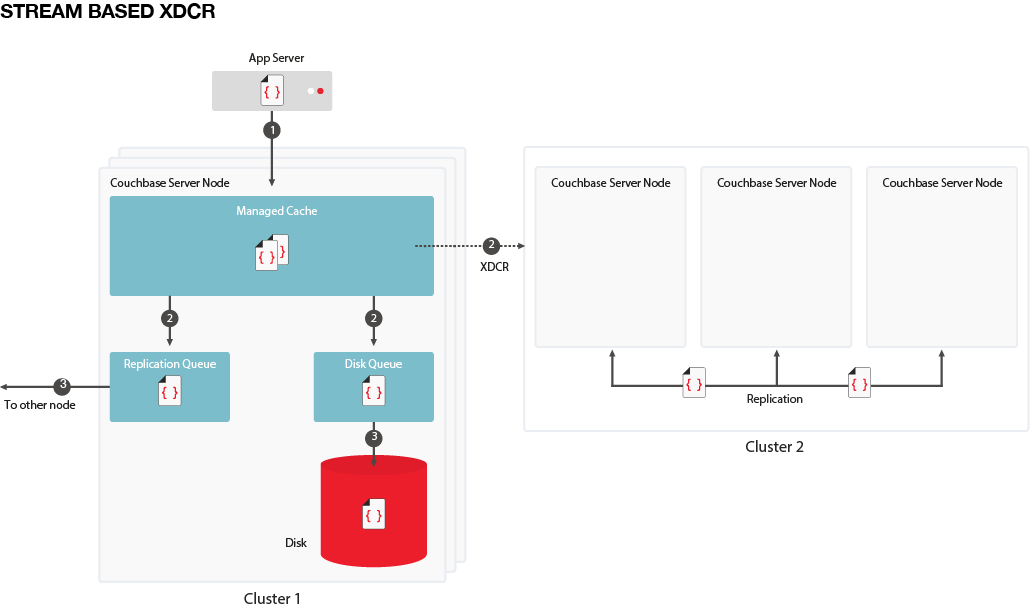Stream-based XDCR
Stream-based XDCR collects data changes from memory on the source cluster and streams the data changes directly to memory on the destination cluster.
Stream-based XDCR replication is available due to the Database Change Protocol (DCP), a stream-based protocol. Once the data changes are detected and streamed to the destination cluster's memory, each cluster persists the data to disk. On the source cluster, the data changes (in memory) are queued and then persisted to disk. Correspondingly, on the destination cluster, the data changes (stream to memory) are queued and then persisted to disk.
Stream-based XDCR replication provides:
- Lower latency, that is, the time gap between data replication
- High availability and disaster recovery
- Improves recovery point objective (RPO)
- Smaller data loss window

Backward compatibility
- Changes are made automatically through the upgrade.
- Only the source cluster has to be upgraded. The destination cluster accepts the data changes into memory.